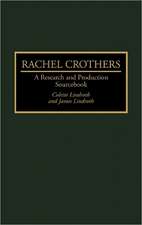Picaresque Narrative, Picaresque Fictions: A Theory and Research Guide: Contributions in Women's Studies; 99
Autor Ulrich Wicksen Limba Engleză Hardback – 31 ian 1989
Wicks has made a number of important contributions to the study of the picaresque. . . . Wicks's book does not attempt to answer all questions posed by the term, but it provides the most comprehensive view to date on the issues in the picaresque debate. The first third of the book deals with a consideration of the picaresque as a genre, the role of the picaresque in literary scholarship, the value of a modal approach, and the nature of picaresque narrative. The difficulties raised in the chapter on the picaresque mode, for example, indicate how this approach, despite its flaws, can illuminate texts and contribute to the critical process. The remainder of the book includes brief but perceptive analyses of more than 60 picaresque works, from "Alonso, mozo de muchos amos" to the Woody Allen film, "Zelig." The metacritical thrust and the extensive bibliography make this a true theory and research guide.' A must for public and academic libraries. "Choice"
Picaresque fiction, according to Wicks, is neither a historical episode in the development of the novel nor merely a phenomenon in the social and literary history of Spain, although both are important manifestations of this essential narrative form. It is, he contends, universal narrative structure and theme. His book describes and defines picaresque narrative with careful attention paid to its historical development as a genre and its persistent appeal as an archetypal narrative structure. Beginning with a definition and discussion of the basic picaresque narrative structure and theme, Part I considers the origins and development of a specific type of picaresque narrative in sixteenth and seventeenth century Spain--the picaresque novel. This is followed by a history of the term and its various interpretations by critics over the years. He then proposes a genre-construct of picaresque narrative, followed by an extensive bibliography of critical works. Part II explores the usefulness of generic awareness in the act of reading by describing sixty specific works of fiction which collectively illustrate the full narrative spectrum of the picaresque mode.
Preț: 302.96 lei
Preț vechi: 521.70 lei
-42% Nou
57.98€ • 60.31$ • 47.86£
Carte tipărită la comandă
Livrare economică 15-29 aprilie
Specificații
ISBN-10: 0313249342
Pagini: 383
Dimensiuni: 152 x 229 x 25 mm
Greutate: 0.74 kg
Editura: Greenwood Press
Seria Contributions in Women's Studies; 99
Descriere
Picaresque fiction, according to Wicks, is neither a historical episode in the development of the novel nor merely a phenomenon in the social and literary history of Spain, although both are important manifestations of this essential narrative form. It is, he contends, universal narrative structure and theme. His book describes and defines picaresque narrative with careful attention paid to its historical development as a genre and its persistent appeal as an archetypal narrative structure. Beginning with a definition and discussion of the basic picaresque narrative structure and theme, Part I considers the origins and development of a specific type of picaresque narrative in sixteenth and seventeenth century Spain--the picaresque novel. This is followed by a history of the term and its various interpretations by critics over the years. He then proposes a genre-construct of picaresque narrative, followed by an extensive bibliography of critical works. Part II explores the usefulness of generic awareness in the act of reading by describing sixty specific works of fiction which collectively illustrate the full narrative spectrum of the picaresque mode.
Notă biografică
ULRICH WICKS is Associate Professor of English at the University of Maine, where he has also served as department chair and directed the Honors Program. His previous publications include articles on the picaresque in "PMLA," "Genre," "Mosaic," and College Literature
Don Quixote in "Approaches to Teaching Cervantes' Don Quixote" (Modern Language Association, 1984)
and on film and fiction in "The Rhetoric Review," "Literature/Film Quarterly," and "Narrative Strategies: Original Essays in Film and Prose Fiction."





















